R.C Fence LLC makes it harder for would-be trespassers to enter your property. Keeps kids and pets safe inside the yard. It can also add to the curb appeal of your house.
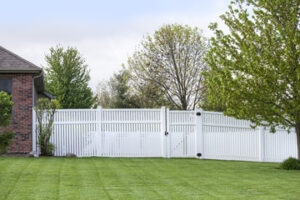
If you want to build a fence, be sure to talk with your neighbors first. A fence may upset them if they feel it obstructs their view or hurts their property.
As a homeowner, you likely have a general idea of where your property lines are. The driveway, the border of your lawn and even your fence might serve as visual markers. But these landmarks may not necessarily align with your property line, so it’s important to be aware of the true boundaries of your land before you start building a home fence.
Knowing your property lines helps you avoid encroachment on your neighbor’s land, which could potentially lead to a legal dispute. This is especially important when it comes to installing a fence, as many laws stipulate that fences must be at least 2 – 8 inches from the property line to prevent encroachment. It’s also critical to be aware of your property lines when it comes to landscaping and planting, as any plants or trees that stray over the property line could potentially become a problem in the future.
While it’s possible to find your property lines by using various methods, the most thorough approach is to hire a professional surveyor. A licensed surveyor will be able to determine your property line by walking the land and searching for survey pins that are set in the ground. In most cases, you’ll be able to obtain a copy of your property survey from your county’s recorder office. In some cases, you might be able to locate the property surveys for nearby homes that were recently purchased, as these documents typically contain helpful information about property lines and rights of way.
In addition to determining property lines, a professional surveyor will also be able to help you navigate any local zoning ordinances and regulations regarding the installation of a home fence. For example, some cities have strict restrictions on how high a fence can be and whether or not they’re allowed in front yards. It’s a good idea to contact your city’s zoning department before hiring a contractor to ensure that they have all of the necessary information about your home and property.
Adding a fence to your property is an excellent investment that can increase the value of your home by up to 70 percent. But before you begin installing a fence, make sure to confirm your property lines with a professional to ensure that you’re not violating any laws or creating animosity with your neighbors.
A fence is an expensive home improvement project that adds curb appeal and a boost to your property value, but it can also negatively impact your neighbors. A new fence can deprive your neighbors of their views or convenient access routes, so it’s important to communicate with them before you begin construction. In addition, your neighborhood or community rules may limit the type of fence you can build, and HOA guidelines can be especially strict.
To make sure you’re building your fence within your property lines, have a professional land survey done or consult a plat map. If you choose to measure your lot by hand, take a long tape measure and compass to locate stakes along the perimeter of your property. Compare these measurements with those in the plat map or deed to ensure you’re accurate.
Another reason to study the plat is to identify easements on your property, such as those for utility or public use. A plat map will show these, and knowing where they are could make the difference if you ever have a dispute with your neighbor over who owns what part of your property.
If you’re planning on hiring a contractor to install your fence, make sure to ask for references and insurance documentation. The American Fence Association (AFA) recommends that homeowners hire contractors who can provide product samples, a contract and a certificate of insurance before beginning any work.
Finally, call your local utilities company and have any buried lines marked before starting construction. This will help ensure that you don’t damage any pipes or wires while digging holes for posts. For wood fences, you’ll need to treat them with a moisture sealant or stain to protect the wood from the elements and prevent rot or warping. A stain can be more costly than a paint, so consider this extra expense when budgeting your project.
Before you do anything else, it’s important to confirm your property lines. This is a vital part of fence etiquette, as you don’t want your fence to be built on someone else’s land by mistake. You can check your plat or consult the local records office for more information about where your property line lies, or you could hire a land surveyor to take a look for you.
Once you have the location of your property line established, it’s time to start measuring for your fence. Start by marking the corners of your yard with a stake (or paint or some other marker) and then measure from one corner to the next. This will give you the total perimeter of your yard in feet, which is the number you will need to divide by the width of a single fence panel, which is typically between 6 and 8 feet.
As you’re measuring, be sure to account for any trees, bushes, or other permanent obstructions that your fence may run near or around. You’ll also want to make note of any underground utilities that run through the area, like gas, power, or cable lines. These can be hazardous to dig into, so it’s essential to have them marked before you begin. In most areas, you can call 811 to get someone to come out and mark the locations of public utilities for free. At Asheville Fence, we always call this service before starting a job!
It’s important to take your time when measuring for your fence, as mistakes can be expensive. If you goof up on the measurements, it can lead to a lot of extra expense in terms of material and labor costs. Not only that, but a poorly-constructed fence can be dangerous for you or your family members who will be using it.
When you’re finished, you should have a complete diagram of your yard with the perimeter and all of the corners clearly marked. This will allow you to determine how many panels and gates you’ll need for your project, as well as how much wire, hardware, and other supplies you’ll need to purchase.
Before beginning construction, be sure to clear the fence line of any trees, bushes, or permanent obstructions. This can help ensure a more accurate installation while also preventing any damage or accidents during the building process. It’s also a good idea to locate any underground utilities that may be in the path of your fence. Call 811 or your local before-you-dig service to have any lines marked so you can avoid potential hazards and repairs later on.
You should also be aware of any features that will require special consideration before your fence is installed, such as slopes and contours. This will affect the amount of slope your fence should have, and the type of materials needed to support it. It is important to double-check your measurements before starting to make sure the plan you have in mind will work out, particularly for areas where a fence will be going up next to a driveway or a house.
Once you’re sure your measurements are accurate, it is time to start digging post holes. Begin with the corner posts first, then mark spots for all of the line posts. Your line posts will need to be spaced at intervals that are equivalent to the length of your panels, which is usually every 6 or 8 feet. You should also mark any end posts that will need to be placed, such as ones for your house or a gate.
When you are ready to begin installing the fence, be sure you have all of the necessary supplies, including a shovel, post hole digger, and any other tools you will need. It is always a good idea to purchase extra supplies ahead of time to prevent any delays or unforeseen expenses that could arise during the project.
As you’re putting in your posts, it is a good idea to use the twine you used for measuring to ensure they are all positioned correctly. This will help ensure that your fence is straight and level once it is finished, which can be difficult to accomplish if you don’t have the right tools for the job.
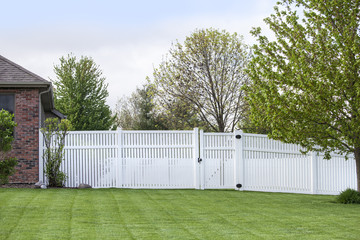
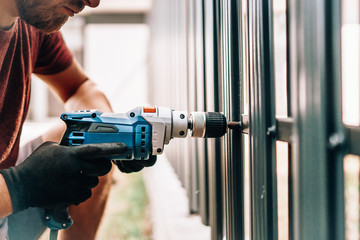
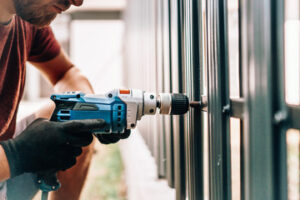 A fence is a great way to add curb appeal and security to your property. It can increase your home’s value by up to $5,000, depending on the type and material of fence you choose. It is also one of the most affordable ways to increase your home’s security. However, it’s important to consider the cost of materials and installation before committing to a fence project.
A fence is a great way to add curb appeal and security to your property. It can increase your home’s value by up to $5,000, depending on the type and material of fence you choose. It is also one of the most affordable ways to increase your home’s security. However, it’s important to consider the cost of materials and installation before committing to a fence project.
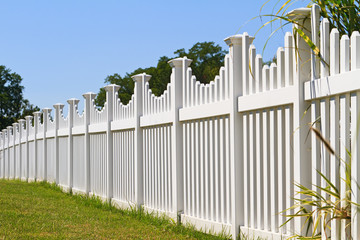
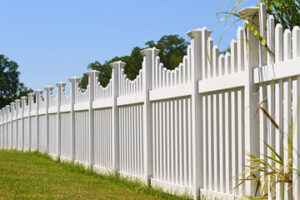 You might consider installing a vinyl fence if you’re in the market for a new wall. But what exactly is the vinyl fence? This synthetic material is made from plastics, including recycled plastics. Sometimes, the plastics are combined to give them more strength and UV stability. It’s also known as PVC or vinyl fence. Here are some benefits and disadvantages of vinyl fences. Read on to learn more about this versatile material.
You might consider installing a vinyl fence if you’re in the market for a new wall. But what exactly is the vinyl fence? This synthetic material is made from plastics, including recycled plastics. Sometimes, the plastics are combined to give them more strength and UV stability. It’s also known as PVC or vinyl fence. Here are some benefits and disadvantages of vinyl fences. Read on to learn more about this versatile material.